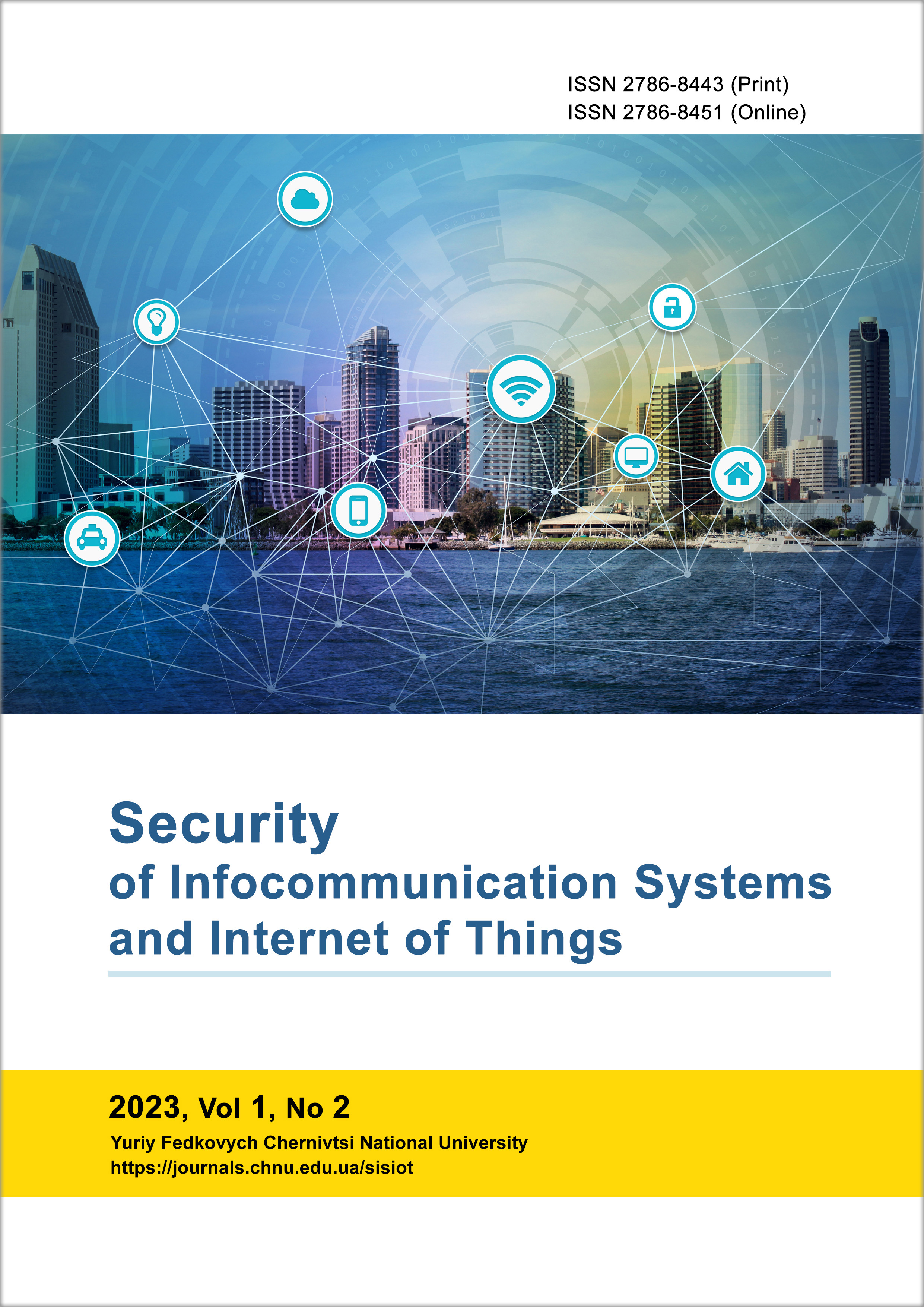Humanitarian demining: How can UAVs and Internet of Things help?
DOI:
https://doi.org/10.31861/sisiot2023.2.02004Keywords:
UAVs, georadar, humanitarian demining, Internet of ThingsAbstract
The history of active mine use spans nearly two centuries. In this relatively short historical period, mines have become a global problem. Explosive objects and mines, remnants of wars and military conflicts, continue to pose a threat to people residing in these areas for a long time. As of the beginning of 2023, the State Emergency Service of Ukraine reported that approximately 40% of the territory (over 250,000 km2) had been mined. In terms of the extent of mined land, the United Nations classifies Ukraine among the most heavily mined countries. The scale of mine contamination surpasses countries where military conflicts have lasted for decades. The invention and improvement of mines have contributed to the development of methods to counter them. Today, more than fifty different methods and their modifications are known, but none guarantee a 100% success rate, underscoring the relevance of further scientific research. The creation and use of unmanned aerial vehicles (UAVs) have been a significant breakthrough in the field of intellectual achievements. Innovations manifest in all aspects, from modern composite materials to state-of-the-art navigation equipment and software. UAVs are actively deployed in various areas of human activity, demonstrating excellent results. The primary advantage of UAVs in humanitarian demining is the safety they provide, allowing individuals to operate in hazardous conditions beyond physiological and psychophysiological capabilities. The Internet of Things (IoT) is a relatively new combination of information and telecommunications technologies whose popularity is rapidly growing, opening up previously unexplored possibilities for practical applications. UAV and IoT technologies do not fall into the traditional classification of humanitarian demining methods. However, they serve as a connecting link for implementing, based on them or with their direct participation, other technological solutions (including geoinformation system (GIS), neural networks, artificial intelligence, Big Data, etc.). The prospects of implementing 5G communication networks in Ukraine will enhance spatial accuracy when combining both technologies, which is especially crucial for humanitarian demining. The recent advancements in communication technologies, such as 5G, and programs like the IoT, play a crucial role in aerial communication using UAVs. Depending on the application and operational region, UAVs have also been utilized to enhance coverage and throughput in 5G wireless communication. In such cases, UAVs act as intermediate nodes or flying base stations. This helps conduct operations in remote and challenging-to-reach locations. The idea of integrating cloud computing with UAVs enhances their role by providing additional computational capabilities.
Downloads
References
R. Bespalko, T. Hutsul, I. Kazimir, and K. Myronchuk, “Modern approaches to assessing the priority of humanitarian demining,” Technical sciences and technologies, vol. 1, no. 31, pp. 146–157, 2023. [in Ukrainian]
T. Hutsul, K. Myronchuk, V. Tkach, and M. Khobzei, “Economic efficiency and priority of demining: international experience,” Ukrainian Journal of Applied Economics, vol. 8, no. 2, pp. 308–313, 2023. [in Ukrainian]
V. Horbulin and S. Mosov, “Consequences of Mine Wars: Ukrainian Case,” Oboronnyi visnyk, vol. 11, pp. 16–23, 2021. [in Ukrainian]
V. Rodikov, “Genesis and development of blasting and pioneer deal,” Visnyk Natsionalnoho Universytetu Oborony Ukrainy, vol. 1, no. 32, pp. 130–135, 2013. [in Ukrainian]
G. Fedorenko, H. Fesenko, and V. Kharchenko, “Analysis of methods and development of the concept of guaranteed detection and recognition of explosive objects,” Innovative Technologies and Scientific Solutions for Industries, vol. 4, no. 22, pp. 20–31, 2022. [in Ukrainian]
J. N. Wilson, P. Gader, W.-H. Lee, H. Frigui, and K. C. Ho, “A large-scale systematic evaluation of algorithms using ground-penetrating radar for landmine detection and discrimination,” IEEE Trans. Geosci. Remote Sens., vol. 45, no. 8, pp. 2560–2572, 2007.
M. Hermann, T. Pentek, and B. Otto, “Design Principles for Industrie 4.0 Scenarios,” in 2016 49th Hawaii International Conference on System Sciences (HICSS), 2016.
T. Bechtel, L. Capineri, G. Pochanin, F. Crawford, P. Falorni, and V. Ruban, “Demining 4.0: Principles of the latest industrial revolution applied to humanitarian demining,” in Symposium on the Application of Geophysics to Engineering and Environmental Problems 2021, 2021.
S. Sinha, “State of IoT 2023: Number of connected IoT devices growing 16% to 16.7 billion globally,” IoT Analytics, 24-May-2023. [Online]. Available: https://iot-analytics.com/number-connected-iot-devices.
G. Pochanin et al., “Application of the industry 4.0 paradigm to the design of a UWB radiolocation system for humanitarian demining,” in 2018 9th International Conference on Ultrawideband and Ultrashort Impulse Signals (UWBUSIS), 2018.
D. Sipos, P. Planinsic, and D. Gleich, “On drone ground penetrating radar for landmine detection,” in 2017 First International Conference on Landmine: Detection, Clearance and Legislations (LDCL), 2017.
M. Ghareeb, A. Bazzi, M. Raad, and S. Abdulnabi, “Wireless robo-Pi landmine detection,” in 2017 First International Conference on Landmine: Detection, Clearance and Legislations (LDCL), 2017.
S.-U.-H. Dar, Z. Tanzeel, F. Mahmood, and U. Izhar, “GPS-based landmine detection system for multiple operating units,” in 2012 International Conference of Robotics and Artificial Intelligence, 2012.
M. Hamza, A. Jehangir, T. Ahmad, A. Sohail, and M. Naeem, “Design of surveillance drone with X-ray camera, IR camera and metal detector,” in 2017 Ninth International Conference on Ubiquitous and Future Networks (ICUFN), 2017.
T. Hutsul, I. Zhezhera, and V. Tkach, “Features of UAV classification and selection methods,” Technical Sciences and Technologies, vol. 4, no. 30, pp. 201–212, 2023. [in Ukrainian]
B. Rana and Y. Singh, Unmanned Aerial Vehicles for Internet of Things (IoT): Concepts, Techniques, and Applications. Scrivener Publishing LLC, 2021.
N. Mohamed, J. Al-Jaroodi, I. Jawhar, H. Noura, and S. Mahmoud, “UAVFog: A UAV-based fog computing for Internet of Things,” in 2017 IEEE SmartWorld, Ubiquitous Intelligence & Computing, Advanced & Trusted Computed, Scalable Computing & Communications, Cloud & Big Data Computing, Internet of People and Smart City Innovation(SmartWorld/SCALCOM/UIC/ATC/CBDCom/IOP/SCI), 2017.
M. Al-khafajiy, T. Baker, H. Al-Libawy, Z. Maamar, M. Aloqaily, and Y. Jararweh, “Improving fog computing performance via Fog-2-Fog collaboration,” Future Gener. Comput. Syst., vol. 100, pp. 266–280, 2019.
Y. Ganesh, R. Raju, and R. Hegde, “Surveillance drone for landmine detection,” in 2015 International Conference on Advanced Computing and Communications (ADCOM), 2015.
L.-S. Yoo, J.-H. Lee, S.-H. Ko, S.-K. Jung, S.-H. Lee, and Y.-K. Lee, “A drone fitted with a magnetometer detects landmines,” IEEE Geosci. Remote Sens. Lett., vol. 17, no. 12, pp. 2035–2039, 2020.
J. Colorado, C. Devia, M. Perez, I. Mondragon, D. Mendez, and C. Parra, “Low-altitude autonomous drone navigation for landmine detection purposes,” in 2017 International Conference on Unmanned Aircraft Systems (ICUAS), 2017.
Published
Issue
Section
License
Copyright (c) 2023 Security of Infocommunication Systems and Internet of Things

This work is licensed under a Creative Commons Attribution 4.0 International License.









